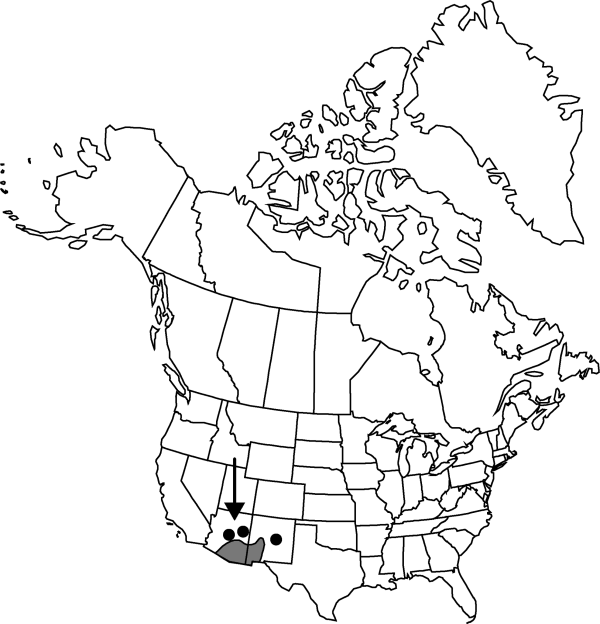Cylindropuntia spinosior
in C. Backeberg and F. M. Knuth, Kaktus-ABC, 126. 1935.
Trees, compact, widely branching, 0.4–2 m. Stem segments firmly attached, whorled or subwhorled, green to purple, 5–23 × 1.3–3.5 cm; tubercles crowded, pronounced, oval to narrowly oval, 0.5–1.2 (–1.5) cm; areoles broadly obdeltate to elliptic, 4.5–7 × 2–4 mm; wool yellow to tan, aging gray to black. Spines (4–) 6–18 (–24) per areole, at most areoles, interlacing with spines of adjacent areoles, pale tan (rarely yellowish), pinkish to redbrown; abaxial spines erect to usually deflexed, terete, often flattened basally, 8–19 mm; adaxial spines erect or spreading, subterete; ± bristlelike spines at areole abaxial margins; sheaths persisting, uniformly whitish, not baggy. Glochids in inconspicuous adaxial tuft, yellow to tan, aging gray, 1–2 mm. Flowers: inner tepals rose to red-purple, bronze-purple, or yellow, sometimes pale greenish yellow or whitish, spatulate, 18–35 mm, emarginate-apiculate; filaments deep purple to pink-purple, sometimes green; anthers pale-yellow; style white or pink to purple distally; stigma lobes white to cream. Fruits rarely proliferating, yellow, sometimes tinged reddish to purplish, broadly cylindric, 20–50 × 17–30 mm, fleshy, strongly tuberculate, spineless; areoles 28–50 (–62); tubercles longer in distal portion of fruit; umbilicus to 10 mm deep. Seeds pale-yellow, suborbicular to oval in outline, flattened to warped, 4–5 × 3–4 mm, sides with 0–3 large depressions; girdle smooth. 2n = 22.
Phenology: Flowering spring–early summer (Apr–Aug).
Habitat: Desert and plains grasslands, extending onto Sonoran Desert flats, sandy to loamy soils
Elevation: 300-2000 m
Distribution

Ariz., N.Mex., Mexico (Chihuahua), Mexico (Sonora)
Discussion
Cylindropuntia spinosior forms hybrids with C. acanthocarpa var. major, C. arbuscula, C. fulgida (see 6. C. ×kelvinensis), C. leptocaulis (see discussion under 3. C. ×tetracantha), and C. versicolor (= C. ×grantiorum P. V. Heath). Introgression between C. spinosior and C. imbricata occurs in a more or less continuous band from central New Mexico to Chihuahua, Mexico. The hybrids between C. spinosior and C. acanthocarpa var. major are sprawling shrubs with irregular branching pattern and have spine clusters with one or more spines longer than others and fleshy fruits, some with one to few spines per fruit. Chromosome numbers of hybrids are all reported as 2n = 22.
Selected References
None.